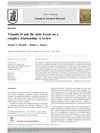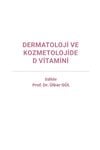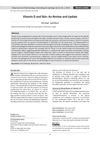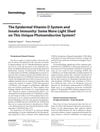Clinical Snippets: Dermatological Studies on hCAP18, PSORS1, Hair Follicle Generation, and Solar Lentigines
April 2005
in “
Journal of Investigative Dermatology
”
TLDR Vitamin D helps protect skin, PSORS1 gene's risk interval for psoriasis is expanded, hair follicles can be generated from mouse cells, and interferon-γ may cause pigmented skin lesions.
The document summarized several studies related to dermatology. One study by Weber et al. found that applying a vitamin D analog to the skin of four healthy individuals upregulated the antimicrobial protein hCAP18, suggesting that vitamin D enhances skin protection. Elder and colleagues expanded the risk interval for the PSORS1 gene associated with psoriasis susceptibility to approximately 300 kb, based on a large-scale study. Zheng et al. developed a "hair patch" assay system that generated hair follicles from cells, providing a model for studying new organ formation. Aoki and Moro's research on solar lentigines in mice indicated that IFN-γ might play a key role in the development of these pigmented lesions.



